History lessons in Singapore: Some heritage trails for you to explore
Sign up now: Get ST's newsletters delivered to your inbox
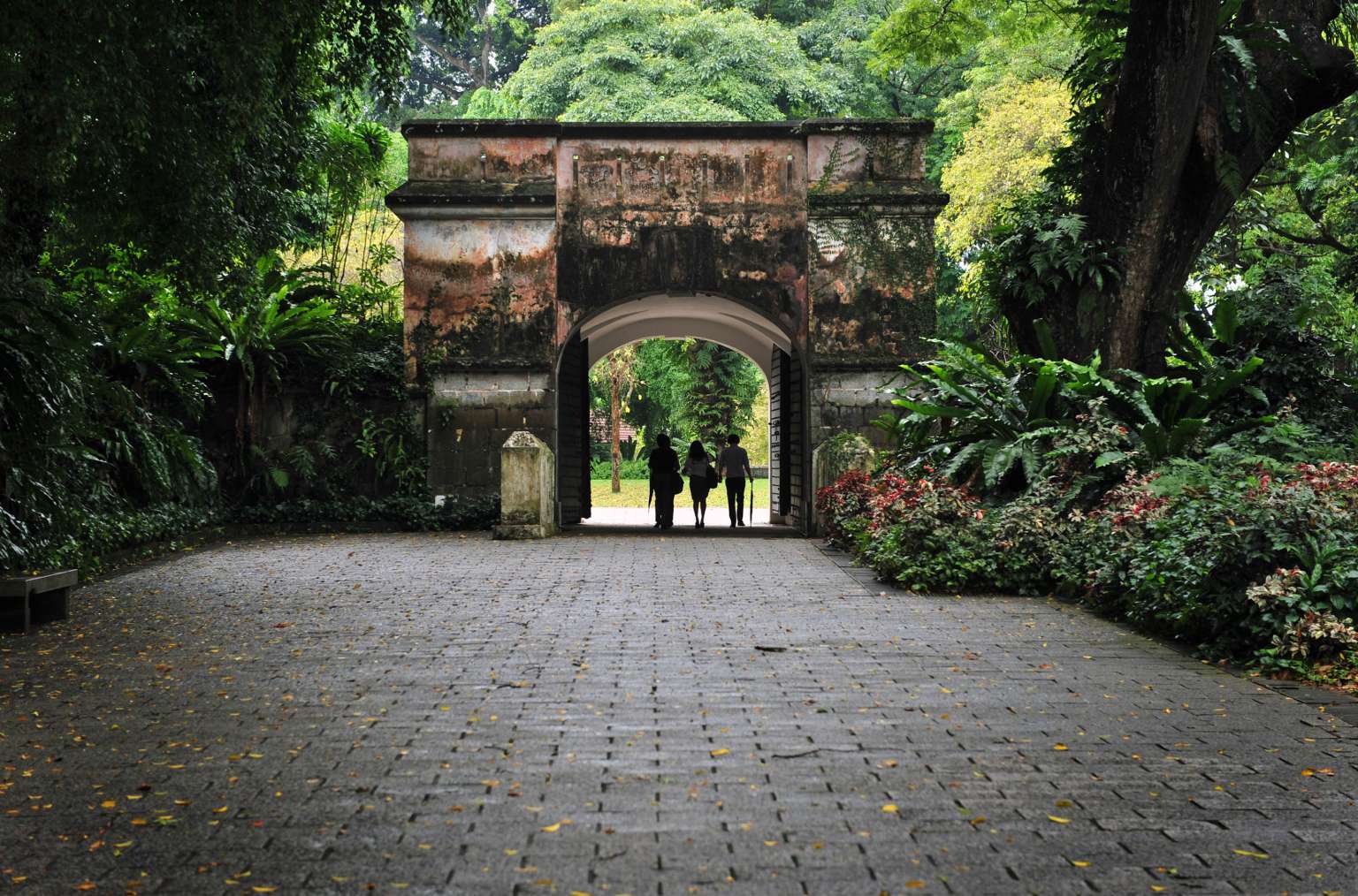
The Fort Gate at Fort Canning.
PHOTO: ST FILE
Follow topic:
This article was first published on March 30, 2016, and updated on Sept 6, 2017
SINGAPORE - The National Heritage Board launched its 17th heritage trail, which brings visitors on a tour of the Tampines estate, on Wednesday (Sept 6).
Now filled with high-rise residential units, the trail seeks to highlight the town's rural past - for instance, it used to be a hunting ground for tigers in the late 1800s.
Now filled with high-rise residential units, the trail seeks to highlight the town's rural past - for instance, it used to be a hunting ground for tigers in the late 1800s.
There are three bite-sized thematic routes for trail-goers to explore Tampines' heritage based on their interests, including a first-ever Green Spaces Trail that takes cyclists through scenic landscapes.
The trail also seeks to celebrate lesser-known stories from the community, such as first-generation hawkers from the Tampines Round Market & Food Centre.
We take a closer look at 10 other trails in the city, from the Ancient History Trail in Fort Canning Park to a tour of the Alexandra and Labrador areas, which documents the fall of Singapore during World War II.
1. Istana heritage trails
Key facts: Three mobile education trails were launched in June this year - the Istana Heritage Gallery trail, the Istana Park trail that showcases the Istana's history and the Presidents' trail, which covers seven locations in the civic district and tells a story about each of Singapore's seven presidents.
The trails use GPS technology to provide suggested locations, augmented reality, image recognition and beacons.
What's special about it: President Tony Tan, who was at the launch of the trails, said they aimed to make the Istana more accessible to the public, outside of the four or five times a year during the Istana's Open House.
The Istana Park trail, for instance, takes visitors on a tour of the flora and fauna around the park.
2. Little India heritage trail
Key facts: The first official heritage trail of the 200-year-old precinct features more than 40 sites spanning 4km.
There are three thematic routes called Serangoon in the 1900s, Walk of Faiths and Shop Till You Drop.
What's special about it: Among the key heritage landmarks is the Mahatma Gandhi Memorial, which was built following a visit by India's first prime minister Jawaharlal Nehru in 1950. The Indian community here raised the money to construct it.
The distinctive precinct also melds the old with the new, hosting trades from the past such as flower garland vendors beside modern businesses and housing conserved shophouses next to high-rise buildings.
Behind the name: Little India was never designated by Sir Stamford Raffles in his 1823 town plan as an area for the Indian community, unlike Chinatown and Kampong Glam for the Chinese and Malays respectively.
Before it got its name in the 1970s-80s, it was known as just Serangoon, after one of the earliest roads in Singapore.
3. WWII in Singapore heritage trail
Key facts: The trail, launched in January 2017 to mark the 75th anniversary of Singapore's fall on Feb 15, 1942, covers Labrador and Alexandra.
With over 23 sites to visit, the trail covers five areas - nature, military, maritime, industrial and public housing history and heritage - and takes about four hours to complete.
What's special about it: Two 1.8m-high walls that lead into the Labrador Nature Reserve are remnants from 1886 when Fort Pasir Panjang - also known as Labrador Battery - was guarded by a heavy iron portcullis and a drawbridge.
Other highlights are the 1930 Berlayer Beacon, which guided boats and ships entering Keppel Harbour in the mid-20th century, and a replica of the "Long Ya Men" granite rock formation, also known as the Dragon Teeth's Gate.
4. Bedok heritage trail
Key facts: There are 10 trail markers spread across a 15km distance. The public can learn more about the history of places such as Chai Chee, Frankel Estate, Opera Estate, Kampong Bedok and Siglap.
What's special about it: Bedok had its beginnings as an idyllic coastal town that fronted the sea - stories of pirates, fishing villages and coconut plantations abound.
A famous 1923 story is related via a marker that describes when Nobel Prize winner Albert Einstein visited a Jewish community in Singapore and was impressed by the beauty of the coconut palms in Frankel Estate.
Behind the name: One of the earliest mentions of Bedok was in Malay-Portuguese cartographer Manuel Godinho de Eredia's 1604 map of the region, which identified a "Sunebodo". This referred referred to a river - better known as Sungei Bedok today.
While the name Bedok has been around for over 400 years, there is still debate over its origins - a common view is that it is derived from the Malay word bedoh, a wooden drum used to issue an Islamic call to prayer.
Another account traces Bedok's origins to the word biduk, referring to a riverine fishing boat in Malay.
5. Civic District Tree Trail
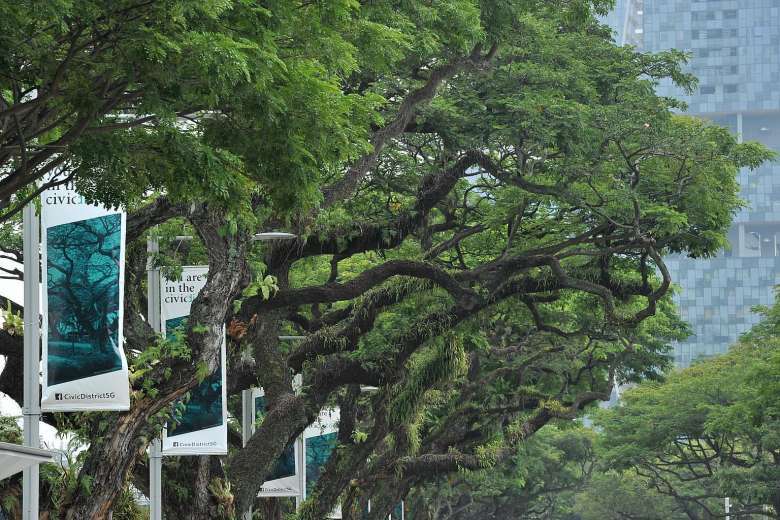
Key facts: Launched by the National Parks Board on May 1 last year, the 3km-long trail aims to give greater recognition to some of the district's trees, such as the angsana and rain tree.
There are monthly guided walks and markers at the route's 20 stops, which starts at the Istana's entrance and ends at the Raffles' Landing Site.
What's special about it: Along the trail is an avenue of 22 heritage rain trees in Connaught Drive. Some date back to the mid-1880s and have witnessed key events in the district, including Singapore's declaration of independence from the British by then Prime Minister Lee Kuan Yew in 1963.
Another stop features an old Indian rubber tree at the National Museum which can be traced back to 1955.
6. Colonial History Trail in Fort Canning Park
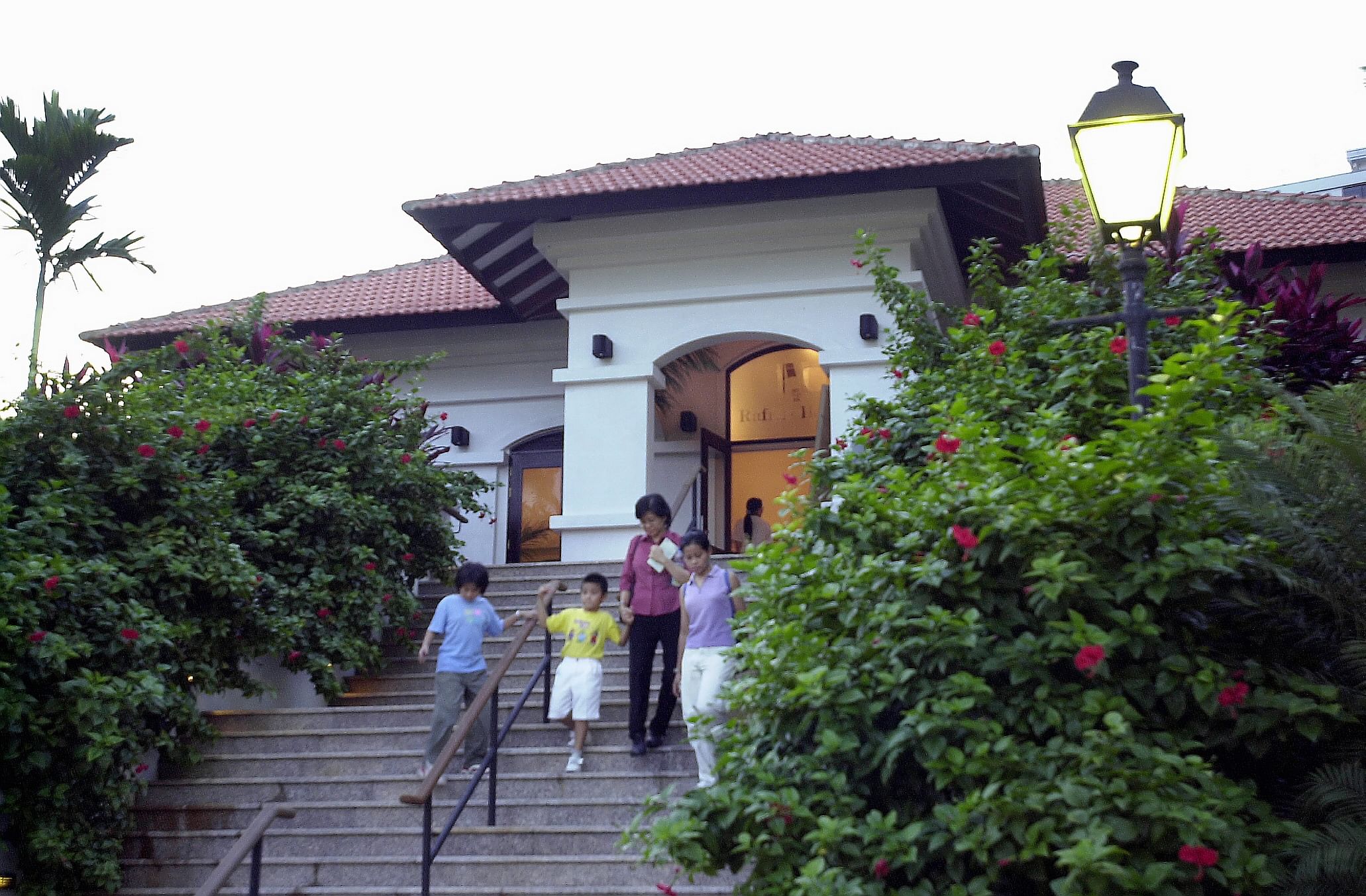
Key facts: Beginning at Fort Canning Centre, the trail winds around the Fort Canning Service Reservoir and ends at Stamford Green. The trail covers 2km and takes 45 minutes to complete on foot.

What's special about it: Fort Canning is home to Singapore's first experimental and botanical garden. In 1822, Sir Stamford Raffles grew nutmeg and clove at this site because these spices had great economic value. At that time, colonial powers seeking monetary gain wanted a share of the lucrative spice trade in South-east Asia.
One of the Heritage Trees here is the ear-pod tree (Enterolobium Cyclocarpum) which has round pods resembling ears. The bark and pods produce tannin, a substance used to make soap. There are a few ear-pod trees scattered throughout the park.
The Flame Of The Forest (Delonix Regia), named for its striking bright red flowers and spreading canopy, is another Heritage Tree. It is located near the Time Ball, a replica of the device used in colonial times to mark time. The ball would be raised and dropped at exactly 1pm.
Behind the name: Fort Canning was named after Viscount Charles John Canning in 1860, who was both the last Governor-General of India and its first Viceroy. His new role marked a change in colonial rule in India. The British government took over from the East India Company, the powerful British company that controlled India's trade.
7. Pioneers Trail in Ann Siang Hill Park and Telok Ayer Green
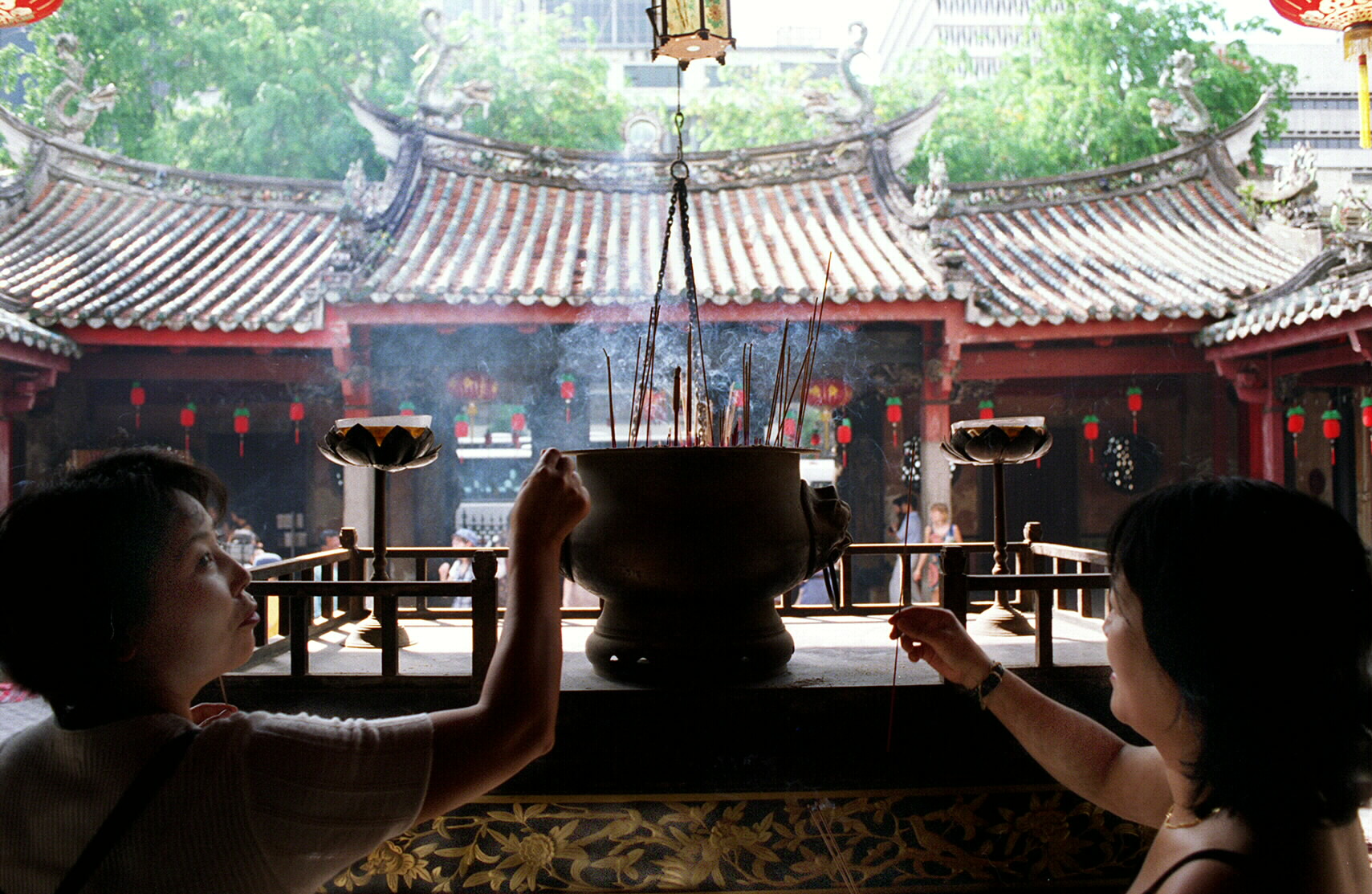
Key facts: The trail begins at Telok Ayer Street and ends at Club Street. It goes through Ann Siang Hill Park, a Chinese enclave stepped in history. The trail is 0.6km long and the walk lasts 30 minutes.

What's special about it: Two Yellow Rain Trees (Samanea Saman) stand at Telok Ayer Green. The tree has yellow leaves and they fold up before a rain storm.
Visitors can also find nutmeg, cinnamon, tamarind and breadfruit trees.
Behind the name: Telok Ayer Street was the landing site for immigrants in the 1820s. Telok Ayer means "water bay" in Malay, as the area was only a few metres away from the original shoreline of the Singapore River.
Upon landing, the immigrants set up places of worship here to pray for safe journeys.
On the street, two National Monuments, Thian Hock Keng Temple and Nagore Dargah Indian Muslim Heritage Centre, are located next to Telok Ayer Green.
Hokkien immigrants built the temple in 1842, making it the oldest temple in Singapore. Further down Telok Ayer Street, Muslim immigrants from South India built the Nagore Dargah shrine in 1830. The shrine was reopened in 2011 as the Nagore Dargah Heritage Centre and it showcases the artefacts of the Indian Muslim community.
8. Monument Trail in Empress Place, Esplanade Park and War Memorial Park

Key facts: The trail begins at Cavenagh Bridge and ends at the Civilian War Memorial. Visitors can walk past Empress Place, Esplanade Park and War Memorial Park. The trail is 1.5km long and takes 45 minutes to complete.

What's special about it: The Cannonball Tree (Couroupita Guianensis) is found behind the bus stop on Connaught Drive. The tree is named for its large, round fruits that resemble cannonballs.
A unique sight is the Leopard Tree (Libidibia Ferrea). Its trunk comes in many shades of brown due to its peeling bark. The tree is just behind the Cannonball Tree.
Behind the name: Empress Place, situated between Asian Civilisations Museum and the Victoria Theatre and Concert Hall, was named in memory of Queen Victoria of England in 1907.
9. Ancient History Trail in Fort Canning Park
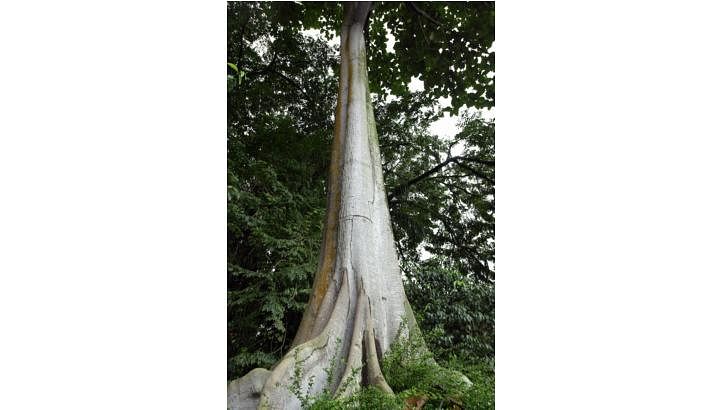
Key facts: The trail begins at the Rain Tree, a Heritage Tree near the Fort Canning Centre, and ends at the former summit of Fort Canning Hill. The trail covers 2km and you need to set aside 45 minutes to explore it on foot.
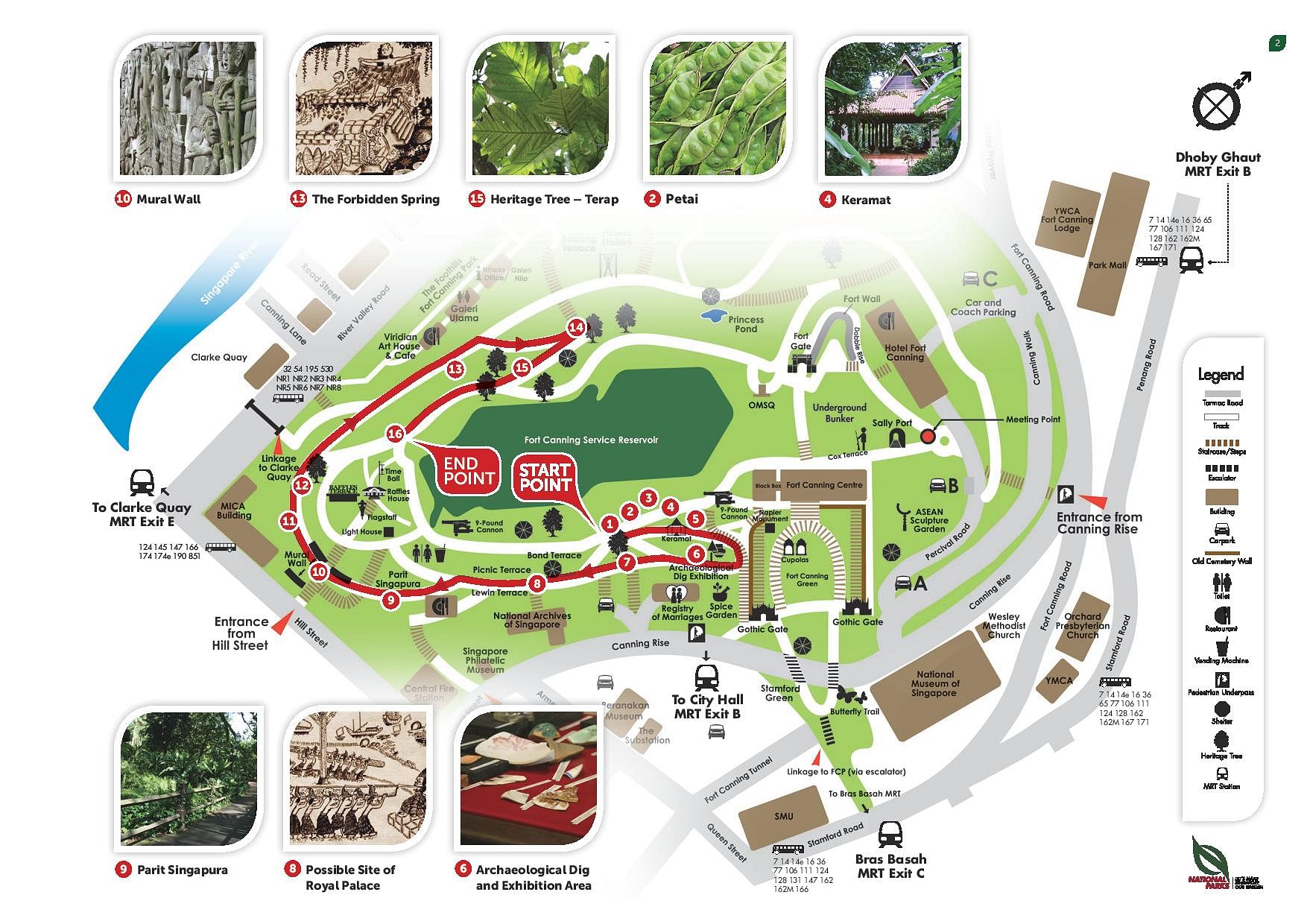
What's special about it: The Terap (Artocarpus Elasticus) produces elastic latex, hence its Latin name. This latex was applied on branches of trees in the area to trap birds that land there. The young leaves are pointed and become oval-shaped as they mature. This Heritage Tree can be found near the Fort Canning Service Reservoir.
The Rain Tree at the beginning of the trail is also a Heritage Tree.
Behind the name: Fort Canning Hill was known as Bukit Larangan, which means "forbidden hill" in Malay . The Malay Annals described the hill as the resting place of the legendary kings of Temasek, who were thought to have ruled Singapore in the 14th century. The Malays were afraid of disturbing the spirits, so they avoided the area.
The Forbidden Spring, located on the west side of Fort Canning Hill, was once reserved only for the wife and consorts of the kings.
10. Rain Forest Walking Trail at Botanic Gardens
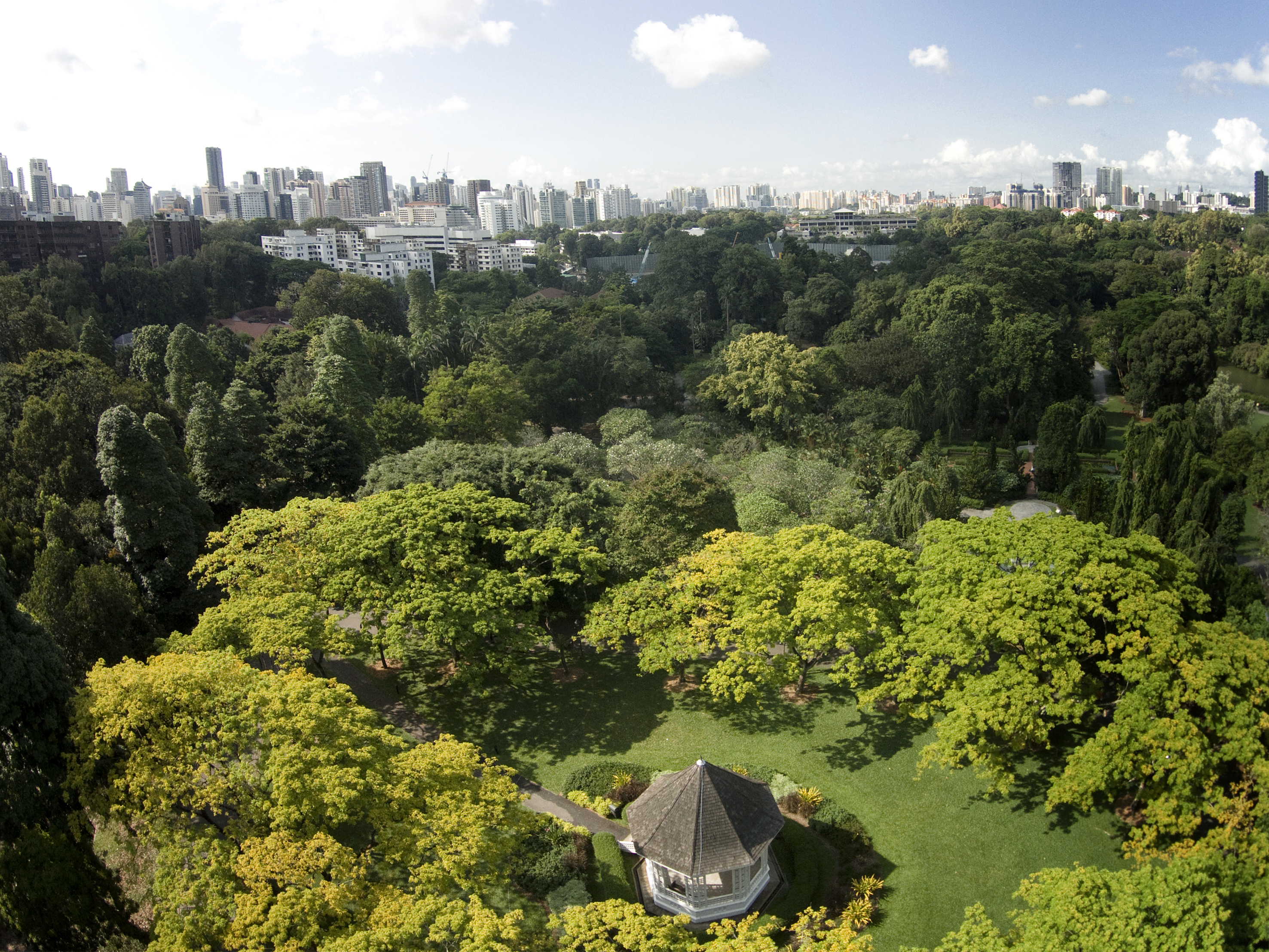
Key facts: The trail begins near the Visitor Centre, near Nassim Gate. Visitors can leave by the Burkill Gate after their last stop at the Giant Mahang, a tree also known as Elephant's Ears for its ear-like leaves. The trail is 600m long and it takes approximately 30 to 40 minutes to complete.
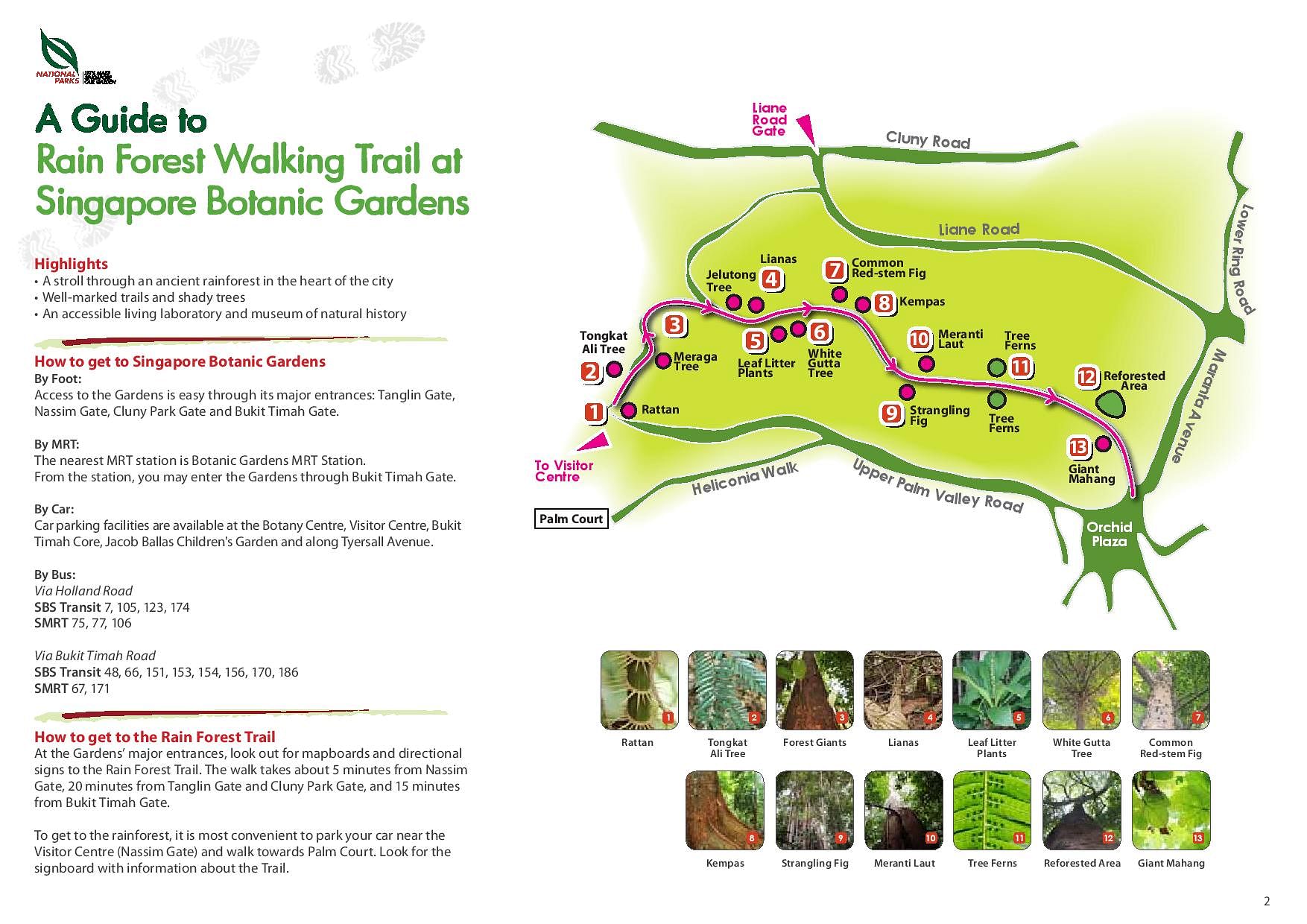
What's special about it: Singapore Botanic Gardens' rainforest is home to the largest native ferns in Singapore. These ferns can measure up to about 3m tall. They grow on trees so they are high enough to get enough sunlight to flourish. They do not have flowers or fruit, reproducing by spores that are found under the fronds.
Behind the name: Nature enthusiasts, inspired by Sir Stamford Raffles' first experimental garden in Fort Canning Park, established the Singapore Botanic Gardens at Tanglin in 1859. The gardens first started as an ornamental one, and once housed a zoo and a band parade area.
After the British government took over in 1874, the gardens also had a scientific role. Its director Henry Nicholas Ridley experimented on rubber trees and invented the herring-bone method of tapping. This method involved a section of the bark being removed, allowing the tree to be tapped for many years without it dying. Rubber tree plantations in Malaya later adopted his techniques, transforming the country into the world's leading rubber producer.
Source: National Parks Board, Singapore Botanic Gardens, National Library Board

